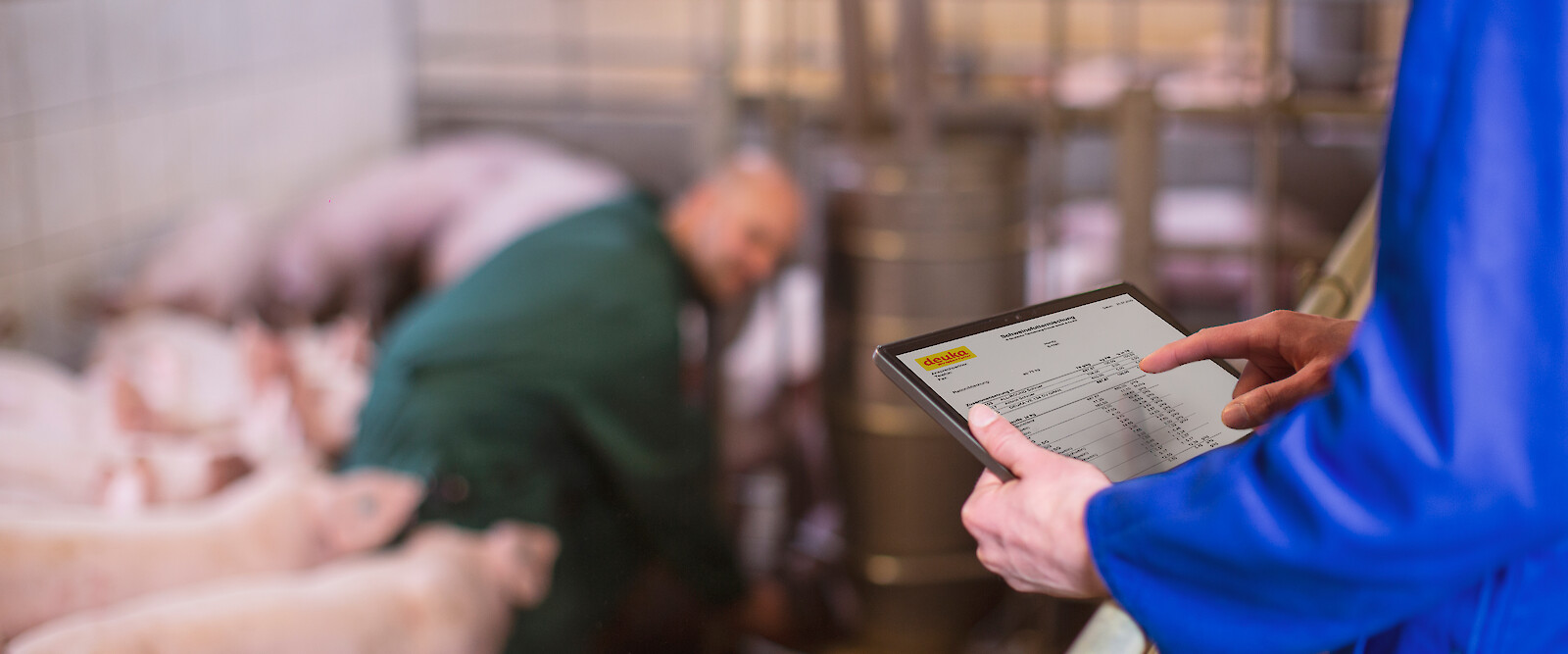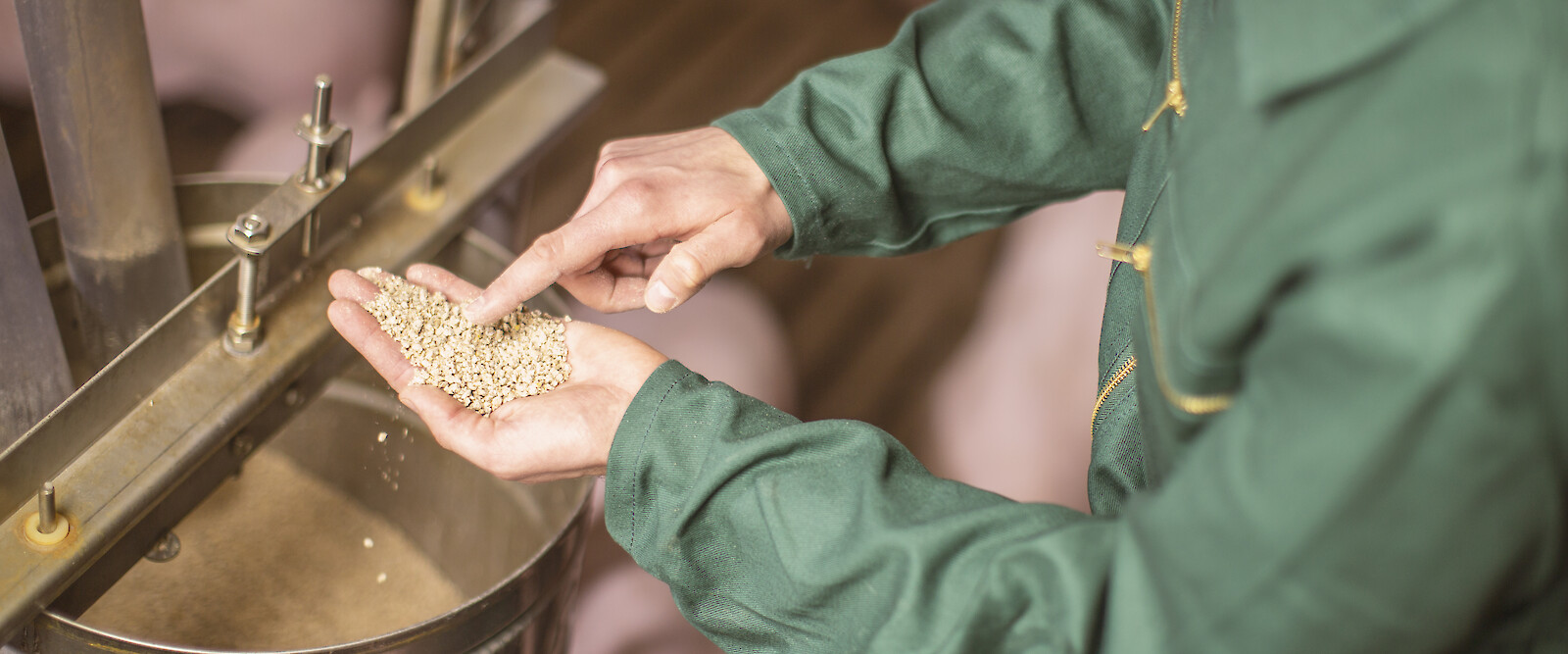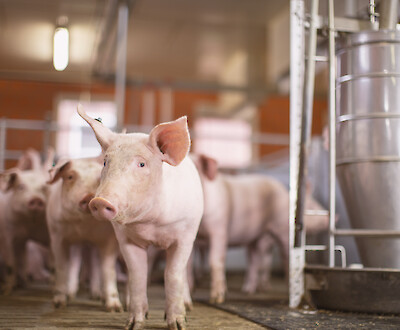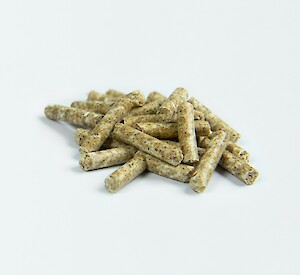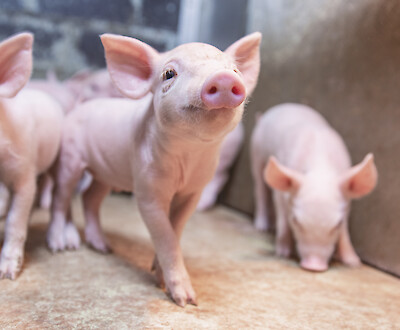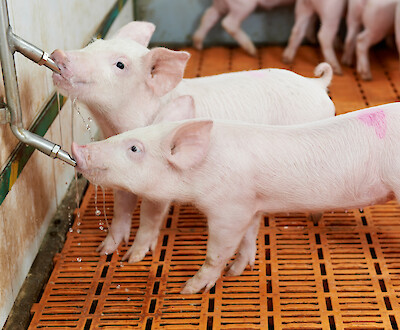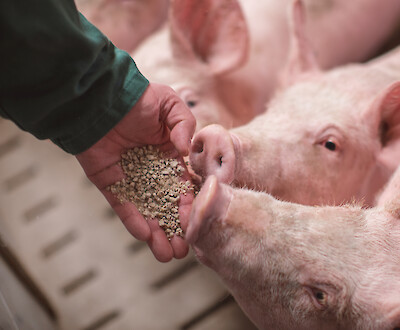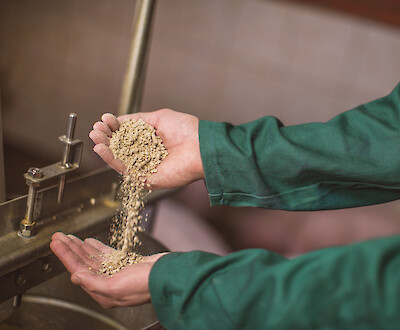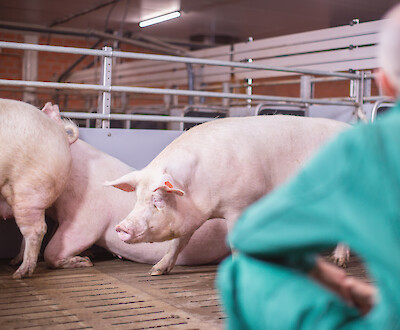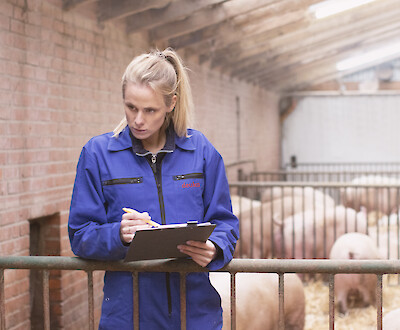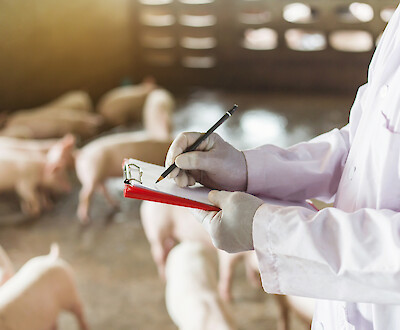Nutrient reduction in pig fattening
Optimisation of phosphorus utilisation through phytase
Phosphorus surpluses in pig fattening are an omnipresent challenge. This is especially true in animal-rich regions in the south and northwest of Germany. If farms want to maintain animal populations, farm managers must actively combat nutrient surpluses and reduce the phosphorus content in the feed. The aim is to fully utilise the performance potential of the animals in fattening and at the same time to provide them with the nutrients they need. It is a difficult balancing act, but the right feeding offers potential savings. The targeted use of phytases, for example, can optimise the utilisation of plantplant phosphorus sources can be optimised, thus increasing the overall availability of phosphorus.
Phosphorus in plants is largely bound to phytic acid and phytates - the salts of phytic acid. However, pigs cannot produce the necessary enzymes from the phytase group themselves - in contrast to the rumen microbes of ruminants, for example. Thus, large parts of the phosphorus (P) bound in pig feed remain unused, as the following illustration shows (see figure).
| Feed component | Total phosphorus | Phytate phosphorus | Proportion of phytate-phosphorus in total phosphorus |
| Sunflower extraction meal | 1,20 % | 1,00 % | 83 % |
| Wheat bran | 1,15 % | 0,94 % | 82 % |
| Rapeseed extraction meal | 1,10 % | 0,72 % | 65 % |
| Soya extraction meal HP | 0,66 % | 0,42 % | 63 % |
| Triticale | 0,32 % | 0,21 % | 65 % |
| Barley | 0,31 % | 0,19 % | 62 % |
| Wheat | 0,30 % | 0,20 % | 65 % |
| Rye | 0,29 % | 0,19 % | 65 % |
| Grain maize | 0,28 % | 0,22 % | 80 % |
| Oat husk bran | 0,20 % | 0,16 % | 82 % |
| Sources: CVB, INRA, LUFA Nord-West, study by the University of Bonn | |||
Tapping additional phosphorus potential
Only phytase enables monogasters to break down and utilise plant phosphorus. By adding microbially derived phytases (e.g. from fungi such as Aspergillus niger or bacteria such as E. coli) to the feed ration, the digestibility of plant feedstuffs in the ration can be significantly increased. This allows the animals to utilise additional phosphorus potential. As a result, the gross content of phosphorus in the feed ration needed to supply the animals can be reduced. Depending on the mass and daily growth rate, the requirement for digestible phosphorus that fattening animals must consume daily is between 3.0 and 6.5 g per day (see table).
|
Increase (g/day) |
Live weight | |||||||||
| 30 kg | 40 kg | 50 kg | 60 kg | 70 kg | 80 kg | 90 kg | 100 kg | 110 kg | 120 kg | |
| 500 | 3,0 | 3,1 | 3,5 | 3,6 | ||||||
| 600 | 3,5 | 3,6 | 3,7 | 3,8 | 3,8 | 3,9 | 4,0 | 4,1 | ||
| 700 | 4,0 | 4,1 | 4,2 | 4,3 | 4,4 | 4,4 | 4,4 | 4,4 | 4,5 | 4,6 |
| 800 | 4,5 | 4,6 | 4,7 | 4,8 | 4,9 | 4,9 | 4,9 | 4,9 | 4,9 | 5 |
| 900 | 5,3 | 5,4 | 5,5 | 5,5 | 5,5 | 5,5 | 5,5 | 5,5 | ||
| 1000 | 5,9 | 6,0 | 6,0 | 6,0 | ||||||
| 1100 | 6,5 | 6,5 | ||||||||
Conditions for efficient phytase use
Regardless of whether phytases were obtained from bacteria or fungi, the following applies: In order for the enzymes to be able to develop their full effect, they must fulfil two conditions.
- Firstly, they need a (weakly) acidic environment with a pH value of about 2.5 to 5.0, which is mainly found in the stomach and the front sections of the intestine.
- Secondly, it is important that phytases meet with the plant phosphorus sources in the acidic environment of the stomach and intestine. If this does not happen, all the beneficial effects of phytase will be absent.
If the latter point is not sufficiently taken into account, pig farmers can misjudge the effect of phytase. It is not enough to increase the total amount of phytase in the ration. For efficient use, the amount of (digestible) phosphorus in the feed must also be increased. If the guidelines are followed, P excretion per animal and day can be reduced by up to 50 %. This is shown, for example, in studies by the Bingen University of Applied Sciences (see figure).
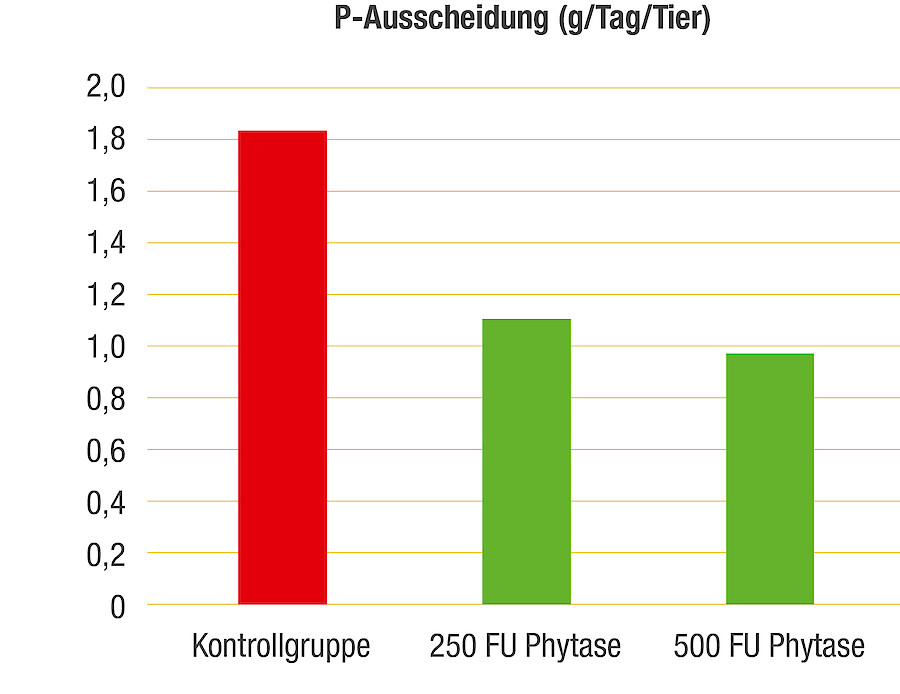
In the trial, P excretion decreased in parallel with the dosage of phytase with appropriate feeding. This shows a decrease in yield growth. At very high dosages (> 2,000 phytase activity per kg feed), the positive effects are only very limited, as the phytase can no longer meet and bind with a correspondingly large amount of phytate.
Keep an eye on the calcium content
However, if the amount of phytase increases sufficiently by adding it to the ration, this not only improves P digestibility: other relevant feed components also benefit from this effect. This is especially true for calcium (Ca), which is absorbed even more easily and to a greater extent. Thus, the amount of this nutrient in the feed can also be reduced.
In order to minimise the risk of Ca oversupply, it is essential to regularly check the calcium content of the ration and adjust it if necessary. If appropriate steps are not taken, there is a risk of an imbalance in the mineral balance and consequently a loss of performance. The same applies to other feed components (e.g. crude protein and various trace elements such as zinc).
Conclusion
- An oversupply of phosphorus in pig fattening should be avoided. It causes unnecessary excretion and higher operating costs. An efficient means to achieve this is the use of phytases.
- Phytases make P sources in plant feed available to the animals. In this way, the gross P content in the feed can be lowered, thus reducing costs and unnecessary discharges.
- Knowing the exact content of the farm's own feed ingredients is the basic prerequisite for calculating the ration.
- When analysing the farm's own feed components, the phosphorus and calcium content should also be determined regularly using wet chemical methods.
- Used optimally, phytases make a real contribution to more sustainability in pig feeding.
Literature on the article is available on request.

